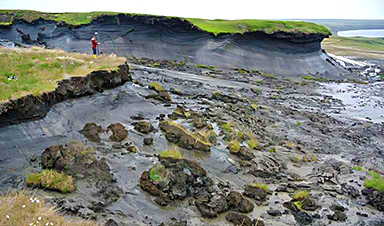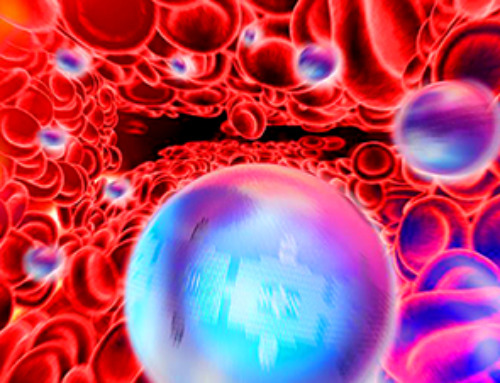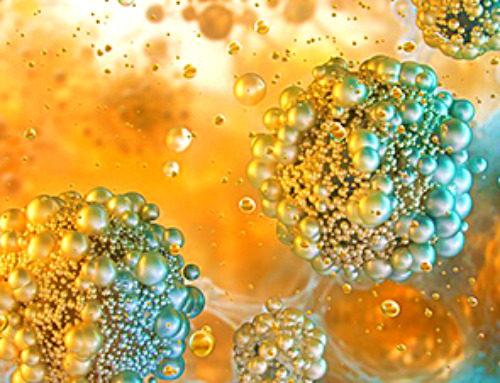Among the many things global warming will be melting this century—sea ice, land glaciers and tourist businesses in seaside towns across the world—is permafrost. Lying underneath 15% of the northern hemisphere, permafrost consists of accumulating dead biomass that remains frozen, never having had a chance to release all its carbon.
As the surface and lower atmosphere warms from human enhancement of the greenhouse effect, crucial questions are how much permafrost will thaw and how much carbon will that release into the atmosphere?
It’s a question complicated by the many processes that take place in the carbon cycle. Now a new study using a process-based biogeochemical model combining the science with observational data suggests the majority of thawed permafrost carbon will remain sequestered in layers that have been frozen, but this will create a significant challenge to future climate change mitigation efforts if the thawing accelerates.
The work, by four scientists in China and one at Purdue University in the US, is published in the journal Earth’s Future.
Permafrost forms mostly where the annual average temperature is below the freezing point of water. If that average is below -5°C, the freezing can be permanent at today’s climate level. (It was much more extensive during the Last Glacial Maximum.)
Making this problem worse is warming amplification at the Earth’s poles—the fact that global warming isn’t evenly distributed over the surface of the globe but increases with latitude. For example, the Arctic has warmed nearly four times faster than has the global average since 1979.
Thawing permafrost would act as a positive feedback to warming—adding to global warming via emissions of carbon dioxide—with the amount depending on how much anthropogenic forcing of climate takes place. With about 1 trillion tons of permafrost ultimately vulnerable to global climate change, modeling its future is a complex business.
Researchers have been working at reducing the uncertainties in the process, which include differences in regional amounts of thawing (which can also undermine buildings and communities), a dearth of observational data in remote regions, changes in vegetation coverage (which may absorb some of the emitted carbon), unpredictable weather extremes and wildfires, and what the paper’s authors describe as “the complex and unique water, energy, carbon, and nutrient interactions among the atmosphere, plants, soils, frozen layers, and microbes.”
Most of all, the amount of carbon thawing permafrost will emit into the atmosphere depends on what socioeconomic path humanity takes into the future. (Meaning any model result is necessarily a projection based on assumed parameters, not a prediction.)
The team considered two established scenarios of the future, the so-called Shared Socioeconomic Pathways (SSPs)—one, SSP126 (earlier: RCP2.6), an optimistic scenario of the future that limits global warming to 2.0°C, and the other, SSP585 (RCP8.5), being the most extreme scenarios where fossil fuel use remains business as usual and provides the vast majority of the future’s energy.
It also incorporated profiles of soil organic carbon using data sets based on observations. After validating their model, they applied it to permafrost thaw in the Northern Hemisphere for the rest of this century.
The new model estimated the permafrost area for the Northern Hemisphere for 2010 to 2015 to be 14.4 million square kilometers, containing 563 gigatons (Gt) of carbon in the latter year. For the SSP126 scenario that limits warming to 2.0°C, the model determined that permafrost degradation would make 119 Gt of carbon available for decomposition by 2100 from soil that was permanently frozen, reducing the carbon in permafrost ecosystems by 3.4 Gt. For the extreme SSP585 scenario, 252 Gt of carbon would become available, reducing the same carbon ecosystem by 15 Gt of carbon.
However, the model found that only about 4% to 8% of this newly thawed carbon is expected to be released into the atmosphere by 2100, a fraction that is within a range estimated by experts in 2015. This implies a maximum of 10 Gt of carbon for the least impactful scenario and 20 Gt of carbon for the most extreme scenario.
For comparison, in 2023, humans emitted 11.3 Gt of carbon from burning fossil fuels, land use changes, raising cattle and other activities, about half of which stays in the atmosphere for years. At present there is 880 Gt of carbon in the atmosphere, 300 Gt of which has been added by humans.
So thawing permafrost does not, in this model, appear to be a serious problem this century. However, degradation of permafrost increases nitrogen availability in soil, as decomposing previously frozen organic matter releases nitrogen in forms plants can use, and nitrogen stored in deeper soil layers is mobilized.
This can significantly increase plant growth and the dynamics of ecosystems. This is a negative, though small, feedback to global warming—in this model by Liu and his team, permafrost thaw increased the nitrogen stock in vegetation by 10 and 26 million tons in the two scenarios, and the carbon stock in vegetation by 0.4 and 1.6 Gt of carbon in the respective scenarios.
While this carbon increase does not compensate for the carbon loss from degrading permafrost, such permafrost thaw has already led to significant changes in plant species composition and growth. Other changes are more complicated.
For warming to cease, human emissions must drop to zero—it’s not enough that they level off at a constant value. As long as warming continues, more and more permafrost will thaw, adding to mitigation challenges this century and larger feedback problems in the 2100s.
The largest uncertainties in warming are in high latitudes and high altitudes, and deeper complications like “abrupt thaw, root deepening and microbial colonization may accelerate the decomposition of this vast amount of thawed [soil organic carbon] in deep soils” the group writes, incorporating ever more nuances into the carbon and nitrogen cycles to better quantify carbon loss in permafrost soils.
As ever, the largest uncertainty will be the actions of man.
More information: L. Liu et al, The Fate of Deep Permafrost Carbon in Northern High Latitudes in the 21st Century: A Process‐Based Modeling Analysis, Earth’s Future (2024). DOI: 10.1029/2024EF004996
Journal information: Earth’s Future
News
Fever-Proof Bird Flu Variant Could Fuel the Next Pandemic
Bird flu viruses present a significant risk to humans because they can continue replicating at temperatures higher than a typical fever. Fever is one of the body’s main tools for slowing or stopping viral [...]
What could the future of nanoscience look like?
Society has a lot to thank for nanoscience. From improved health monitoring to reducing the size of electronics, scientists’ ability to delve deeper and better understand chemistry at the nanoscale has opened up numerous [...]
Scientists Melt Cancer’s Hidden “Power Hubs” and Stop Tumor Growth
Researchers discovered that in a rare kidney cancer, RNA builds droplet-like hubs that act as growth control centers inside tumor cells. By engineering a molecular switch to dissolve these hubs, they were able to halt cancer [...]
Platelet-inspired nanoparticles could improve treatment of inflammatory diseases
Scientists have developed platelet-inspired nanoparticles that deliver anti-inflammatory drugs directly to brain-computer interface implants, doubling their effectiveness. Scientists have found a way to improve the performance of brain-computer interface (BCI) electrodes by delivering anti-inflammatory drugs directly [...]
After 150 years, a new chapter in cancer therapy is finally beginning
For decades, researchers have been looking for ways to destroy cancer cells in a targeted manner without further weakening the body. But for many patients whose immune system is severely impaired by chemotherapy or radiation, [...]
Older chemical libraries show promise for fighting resistant strains of COVID-19 virus
SARS‑CoV‑2, the virus that causes COVID-19, continues to mutate, with some newer strains becoming less responsive to current antiviral treatments like Paxlovid. Now, University of California San Diego scientists and an international team of [...]
Lower doses of immunotherapy for skin cancer give better results, study suggests
According to a new study, lower doses of approved immunotherapy for malignant melanoma can give better results against tumors, while reducing side effects. This is reported by researchers at Karolinska Institutet in the Journal of the National [...]
Researchers highlight five pathways through which microplastics can harm the brain
Microplastics could be fueling neurodegenerative diseases like Alzheimer's and Parkinson's, with a new study highlighting five ways microplastics can trigger inflammation and damage in the brain. More than 57 million people live with dementia, [...]
Tiny Metal Nanodots Obliterate Cancer Cells While Largely Sparing Healthy Tissue
Scientists have developed tiny metal-oxide particles that push cancer cells past their stress limits while sparing healthy tissue. An international team led by RMIT University has developed tiny particles called nanodots, crafted from a metallic compound, [...]
Gold Nanoclusters Could Supercharge Quantum Computers
Researchers found that gold “super atoms” can behave like the atoms in top-tier quantum systems—only far easier to scale. These tiny clusters can be customized at the molecular level, offering a powerful, tunable foundation [...]
A single shot of HPV vaccine may be enough to fight cervical cancer, study finds
WASHINGTON -- A single HPV vaccination appears just as effective as two doses at preventing the viral infection that causes cervical cancer, researchers reported Wednesday. HPV, or human papillomavirus, is very common and spread [...]
New technique overcomes technological barrier in 3D brain imaging
Scientists at the Swiss Light Source SLS have succeeded in mapping a piece of brain tissue in 3D at unprecedented resolution using X-rays, non-destructively. The breakthrough overcomes a long-standing technological barrier that had limited [...]
Scientists Uncover Hidden Blood Pattern in Long COVID
Researchers found persistent microclot and NET structures in Long COVID blood that may explain long-lasting symptoms. Researchers examining Long COVID have identified a structural connection between circulating microclots and neutrophil extracellular traps (NETs). The [...]
This Cellular Trick Helps Cancer Spread, but Could Also Stop It
Groups of normal cbiells can sense far into their surroundings, helping explain cancer cell migration. Understanding this ability could lead to new ways to limit tumor spread. The tale of the princess and the [...]
New mRNA therapy targets drug-resistant pneumonia
Bacteria that multiply on surfaces are a major headache in health care when they gain a foothold on, for example, implants or in catheters. Researchers at Chalmers University of Technology in Sweden have found [...]
Current Heart Health Guidelines Are Failing To Catch a Deadly Genetic Killer
New research reveals that standard screening misses most people with a common inherited cholesterol disorder. A Mayo Clinic study reports that current genetic screening guidelines overlook most people who have familial hypercholesterolemia, an inherited disorder that [...]





















